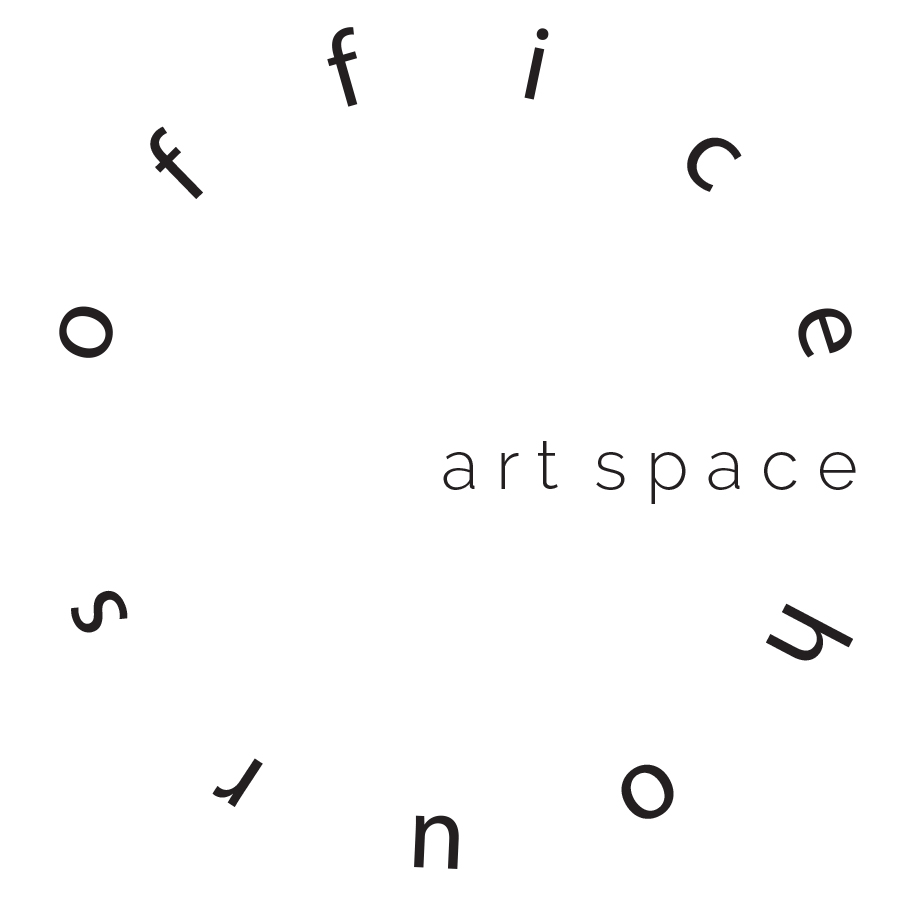scores
!["A Stone's Throw", Razan AlSalah]()
!["A Stone's Throw", Razan AlSalah]()
!["Flourished Earth", Intertwined Collective and A Stone's Throw, Razan AlSalah]()
!["A Stone's Throw", Razan AlSalah]()
!["A Stone's Throw", Razan AlSalah]()
!["A Stone's Throw", Razan AlSalah]()
!["Graphic Score", Iris Martinez, "We Return", jinseok choi, Flourished Earth", Intertwined Collective]()
!["We Return", jinseok choi]()
!["We Return", jinseok choi]()
!["We Return", jinseok choi]()
![Untitled, Kiara Ulale, "We Return", jinseok choi, "Flourished Earth", Intertwined Collective]()
![Untitled, Kiara Ulale]()
!["Flourished Earth" Intertwined Collective]()
!["Flourished Earth", Intertwined Collective, and "A Stone's Throw", Razan AlSalah]()
!["Flourished Earth", Intertwined Collective]()
!["Flourished Earth", Intertwined Collective]()
!["When That Day Comes", Saebyok]()
![Untitled graphic score, Iris Martinez]()
!["Anticip-", Grace Bush]()
![Untitled graphic score, Viviana Campos]()


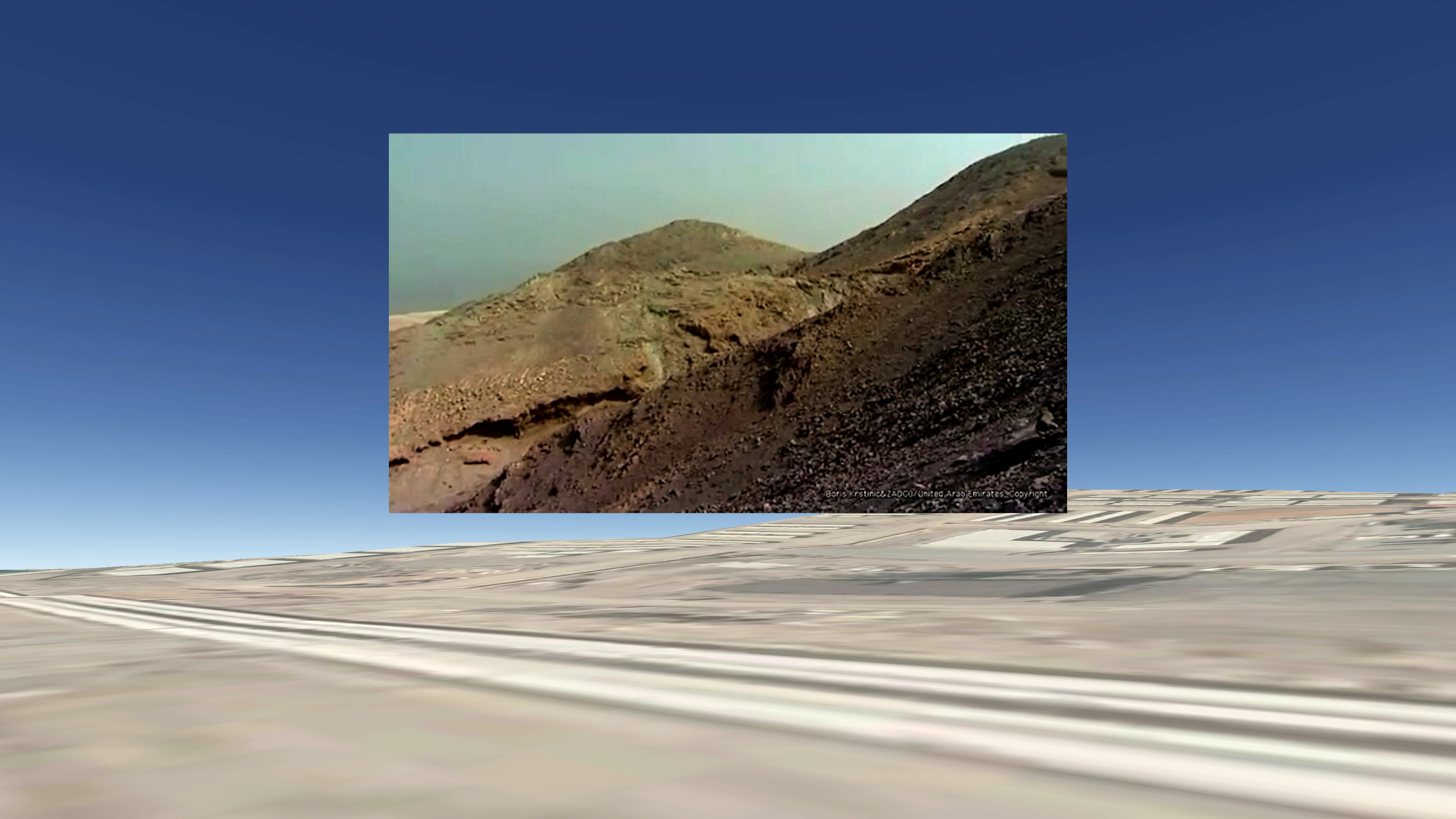


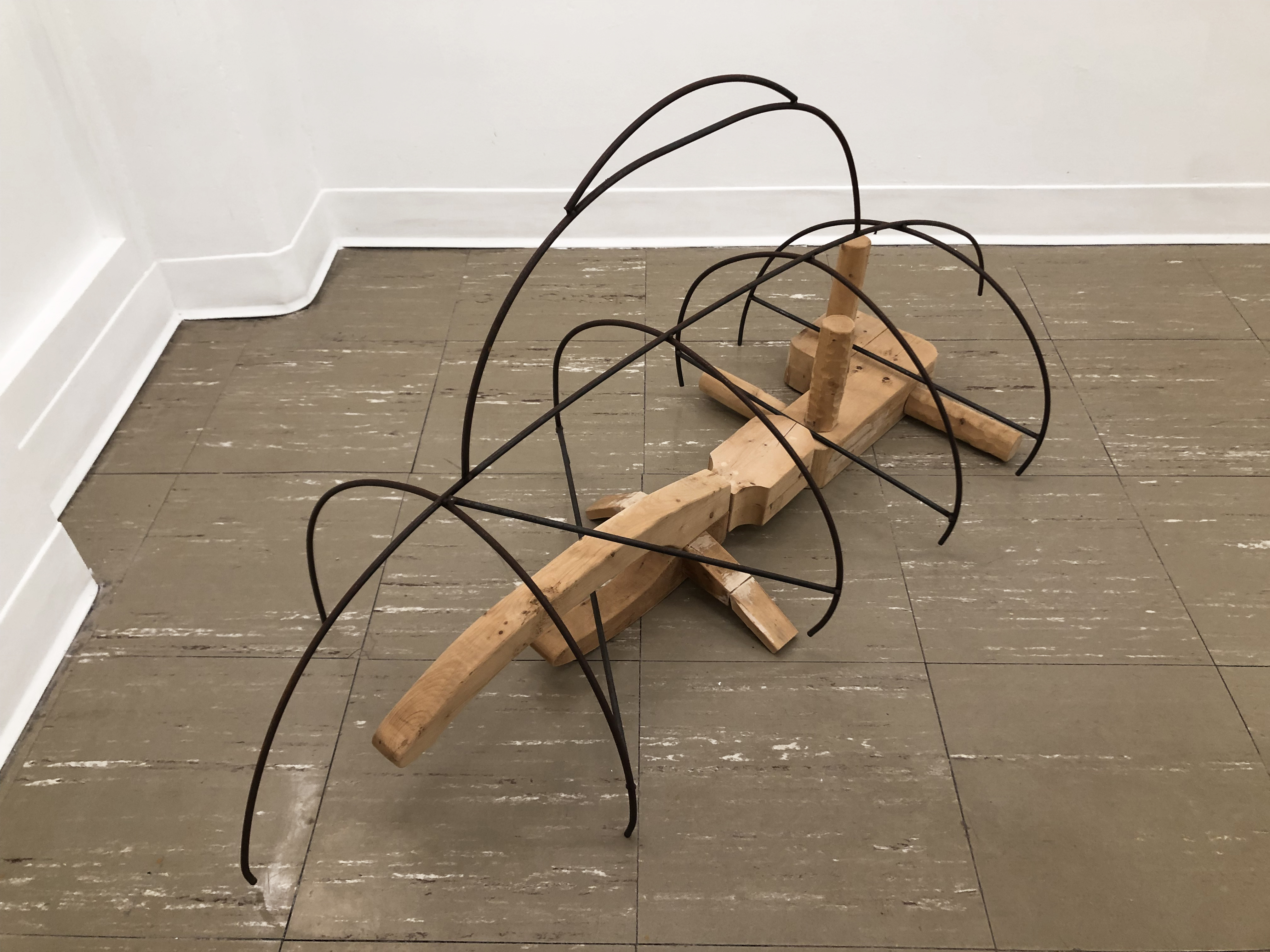
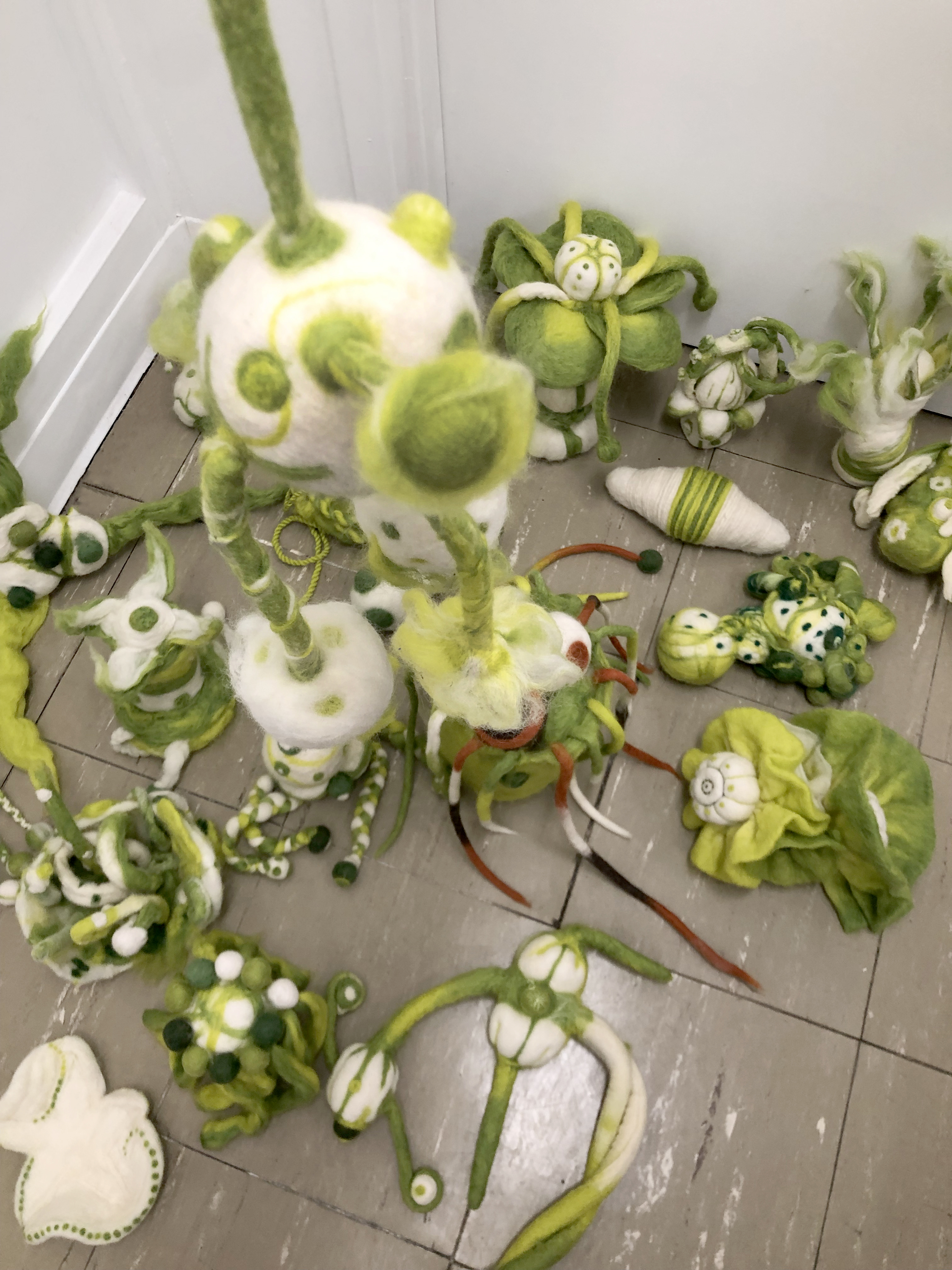


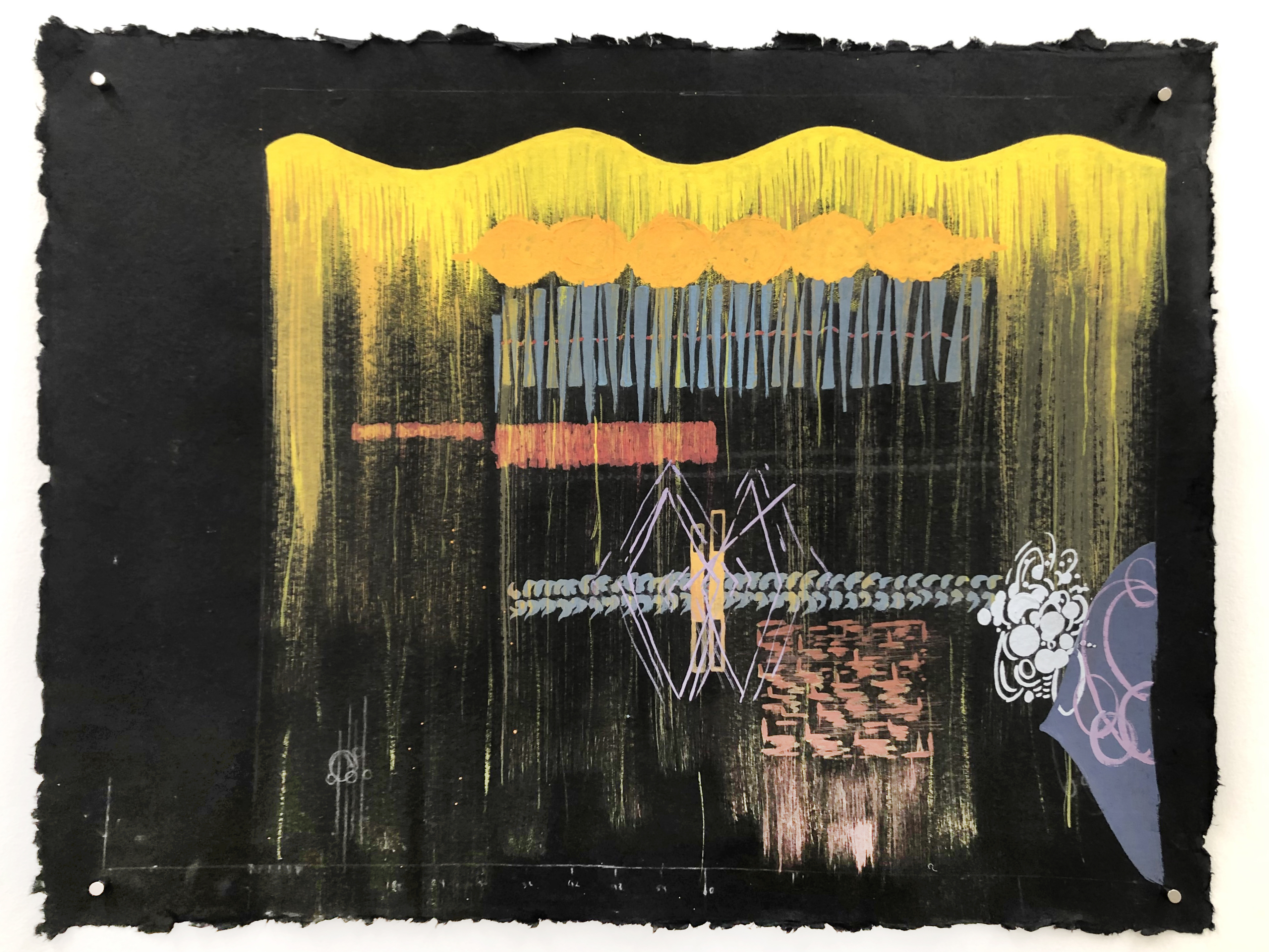


scores
March 27, 2025 - April 17, 2025
Opening March 27, 2025
5:00pm - 7:00pm
Razan AlSalah
Grace Bush
Viviana Campos
jinseok choi
Intertwined Collective
Iris Martinez
Saebyeok
Kiara Ulale
Scores features works on paper, sculpture, textile installation, and video
Scores: collectivity, collaboration, music notation, labor, protest
March 27, 2025 - April 17, 2025
Opening March 27, 2025
5:00pm - 7:00pm
Razan AlSalah
Grace Bush
Viviana Campos
jinseok choi
Intertwined Collective
Iris Martinez
Saebyeok
Kiara Ulale
Scores features works on paper, sculpture, textile installation, and video
Scores: collectivity, collaboration, music notation, labor, protest
scores
Text by Maria Barrios Rivera, CSUDH Art History student
Walking towards Office Hours Art Space, I see a poem by Saebyeok on the wall, which shares the room’s entrance. It conveys what seems like hope and longing for the loved ones mentioned within it, hope for a particular day or time, which the title “When That Day Comes” alludes to. Confused, I step in through the doorway, and vibrant colors contrast loudly against the white walls of the art space, a view that would lift anyone’s spirits.
On my right, I see a film by Razan AlSalah titled “A Stone’s Throw” in which an elderly man walks by the sea. I can hear the ocean waves in the background of the room, I see the bright blue ocean’s waves swaying. Below me lies an underwater ecosystem made up of felt titled “Flourished Earth” made by an artists collective. Near my feet, I see a little white felt starfish, and it makes me smile; it feels peaceful.
Behind me, I see two graphic scores. Viviana Campos’s graphic score features precise line work that mimics the shapes of water droplets and waves, as if it were a score for their sounds. Next to it is the complete opposite, Grace Bush’s “Anticip-” features fluidity through its lack of precision and blurring effect; it feels as if I am staring at what lies beneath the waves, the hustle and bustle of a diversely colored sea life.
To my left is the last graphic score by Iris Martinez, vastly different from the previous scores; it’s dark, and pitch-black fills up most of the space surrounding the sporadic shapes and vivid colors. I feel myself being taken further into the ocean, where darkness is everywhere and the sea life is unfamiliar, the shaking diamonds, a musical notation for the odd aquatic animal sounds echoing below, and the bubbles whose sound is there to remind one of the lack of air. The use of graphic notation allows us to visualize what the compositions may sound like, a different approach used to notate sounds as opposed to the possibly restrictive traditional method of musical notation. The three pieces complement each other, portraying an oceanic symphony where each part of the ocean is given a sound visually.
In the upper left corner, there lies an untitled piece by Kiara Ulale, made of metal and wood. The metal is shaped in a way that mimics the form of a dolphin, while within the sparse metal rods lies its wooden endoskeleton. Directly in front of me hang eight wooden masks entitled “We Return” by jinseok choi, their craftsmanship and the seamless blending between all the different pieces of wood is captivating. As I move closer, I can see that some of the parts are made up of incense, and the sharp contrast between fire and the ocean puzzles me.
At first, when one enters the room, one is greeted with a peaceful perspective of the ocean, associating it with the beauty of the ecosystem it houses and its soothing sounds. The longer one spends inside and becomes informed on the story behind each piece, the ocean changes right before your eyes; it turns into a cold, lonely, and unforgiving place, and just like jinseok choi’s masks, one’s own facial expression shifts from that of a happy one to a sorrowful one.
Razan AlSalah’s film, a story about a displaced Palestinian elder’s experience laboring for hours on end at an offshore oil plant in Zirku. Saebyeok’s poem is revealed to be part of a song inspired by a labor activist who set himself ablaze, and jinseok choi’s masks become a conversation about the lower-class labor force’s unjust treatment, while smoke, which is associated with incense, signifies the working conditions laborers often have to endure.
The felt ecosystem near your feet now changes shape into a representation of the labor force that never rests and works right below surface view, out of sight. And just like the feelings that inspired Grace Bush’s graphical score “Anticip-” I feel anxious, and a lump in my throat forms, and the room—it feels painful now.
Text by Maria Barrios Rivera, CSUDH Art History student
Walking towards Office Hours Art Space, I see a poem by Saebyeok on the wall, which shares the room’s entrance. It conveys what seems like hope and longing for the loved ones mentioned within it, hope for a particular day or time, which the title “When That Day Comes” alludes to. Confused, I step in through the doorway, and vibrant colors contrast loudly against the white walls of the art space, a view that would lift anyone’s spirits.
On my right, I see a film by Razan AlSalah titled “A Stone’s Throw” in which an elderly man walks by the sea. I can hear the ocean waves in the background of the room, I see the bright blue ocean’s waves swaying. Below me lies an underwater ecosystem made up of felt titled “Flourished Earth” made by an artists collective. Near my feet, I see a little white felt starfish, and it makes me smile; it feels peaceful.
Behind me, I see two graphic scores. Viviana Campos’s graphic score features precise line work that mimics the shapes of water droplets and waves, as if it were a score for their sounds. Next to it is the complete opposite, Grace Bush’s “Anticip-” features fluidity through its lack of precision and blurring effect; it feels as if I am staring at what lies beneath the waves, the hustle and bustle of a diversely colored sea life.
To my left is the last graphic score by Iris Martinez, vastly different from the previous scores; it’s dark, and pitch-black fills up most of the space surrounding the sporadic shapes and vivid colors. I feel myself being taken further into the ocean, where darkness is everywhere and the sea life is unfamiliar, the shaking diamonds, a musical notation for the odd aquatic animal sounds echoing below, and the bubbles whose sound is there to remind one of the lack of air. The use of graphic notation allows us to visualize what the compositions may sound like, a different approach used to notate sounds as opposed to the possibly restrictive traditional method of musical notation. The three pieces complement each other, portraying an oceanic symphony where each part of the ocean is given a sound visually.
In the upper left corner, there lies an untitled piece by Kiara Ulale, made of metal and wood. The metal is shaped in a way that mimics the form of a dolphin, while within the sparse metal rods lies its wooden endoskeleton. Directly in front of me hang eight wooden masks entitled “We Return” by jinseok choi, their craftsmanship and the seamless blending between all the different pieces of wood is captivating. As I move closer, I can see that some of the parts are made up of incense, and the sharp contrast between fire and the ocean puzzles me.
At first, when one enters the room, one is greeted with a peaceful perspective of the ocean, associating it with the beauty of the ecosystem it houses and its soothing sounds. The longer one spends inside and becomes informed on the story behind each piece, the ocean changes right before your eyes; it turns into a cold, lonely, and unforgiving place, and just like jinseok choi’s masks, one’s own facial expression shifts from that of a happy one to a sorrowful one.
Razan AlSalah’s film, a story about a displaced Palestinian elder’s experience laboring for hours on end at an offshore oil plant in Zirku. Saebyeok’s poem is revealed to be part of a song inspired by a labor activist who set himself ablaze, and jinseok choi’s masks become a conversation about the lower-class labor force’s unjust treatment, while smoke, which is associated with incense, signifies the working conditions laborers often have to endure.
The felt ecosystem near your feet now changes shape into a representation of the labor force that never rests and works right below surface view, out of sight. And just like the feelings that inspired Grace Bush’s graphical score “Anticip-” I feel anxious, and a lump in my throat forms, and the room—it feels painful now.
